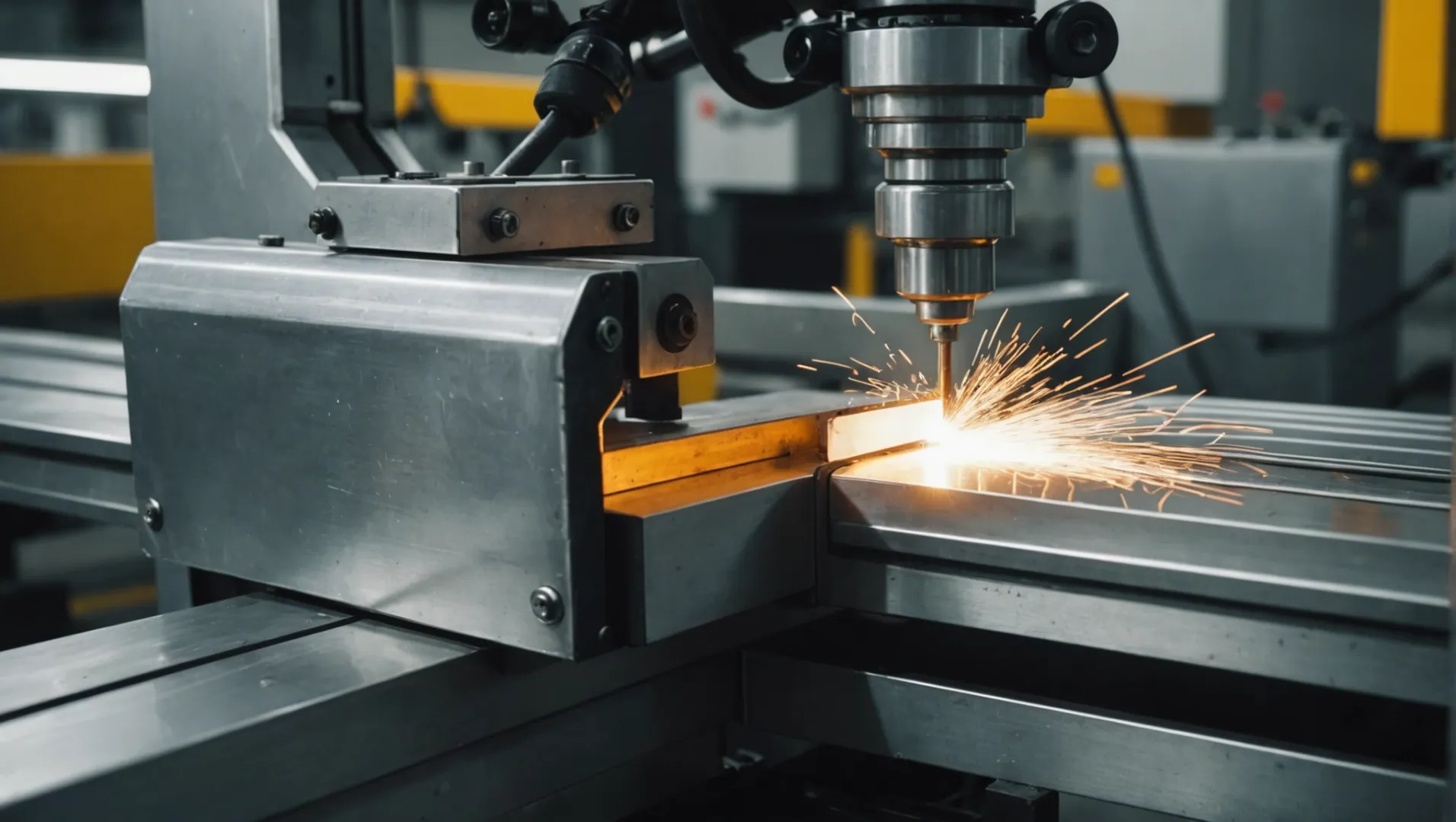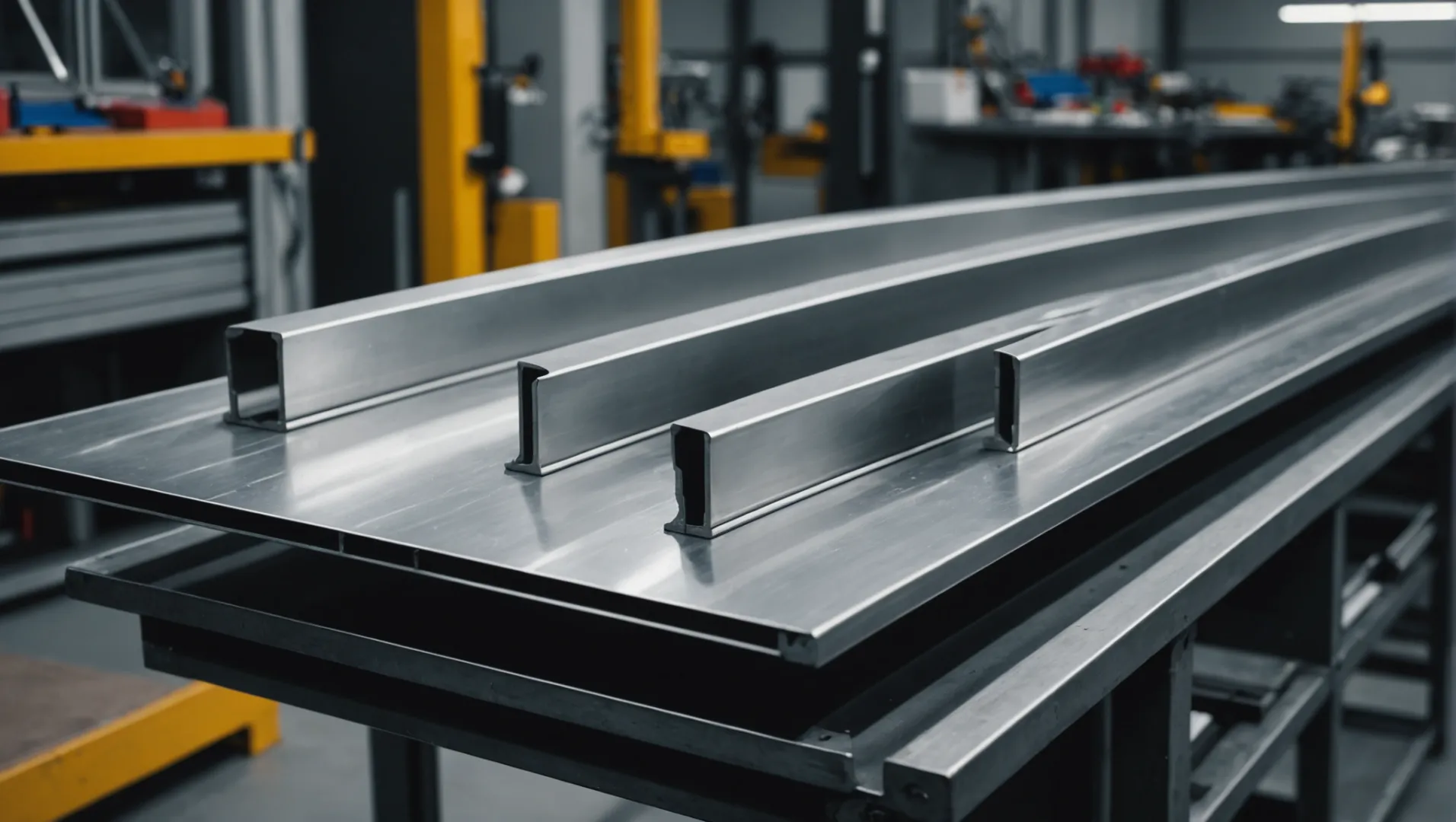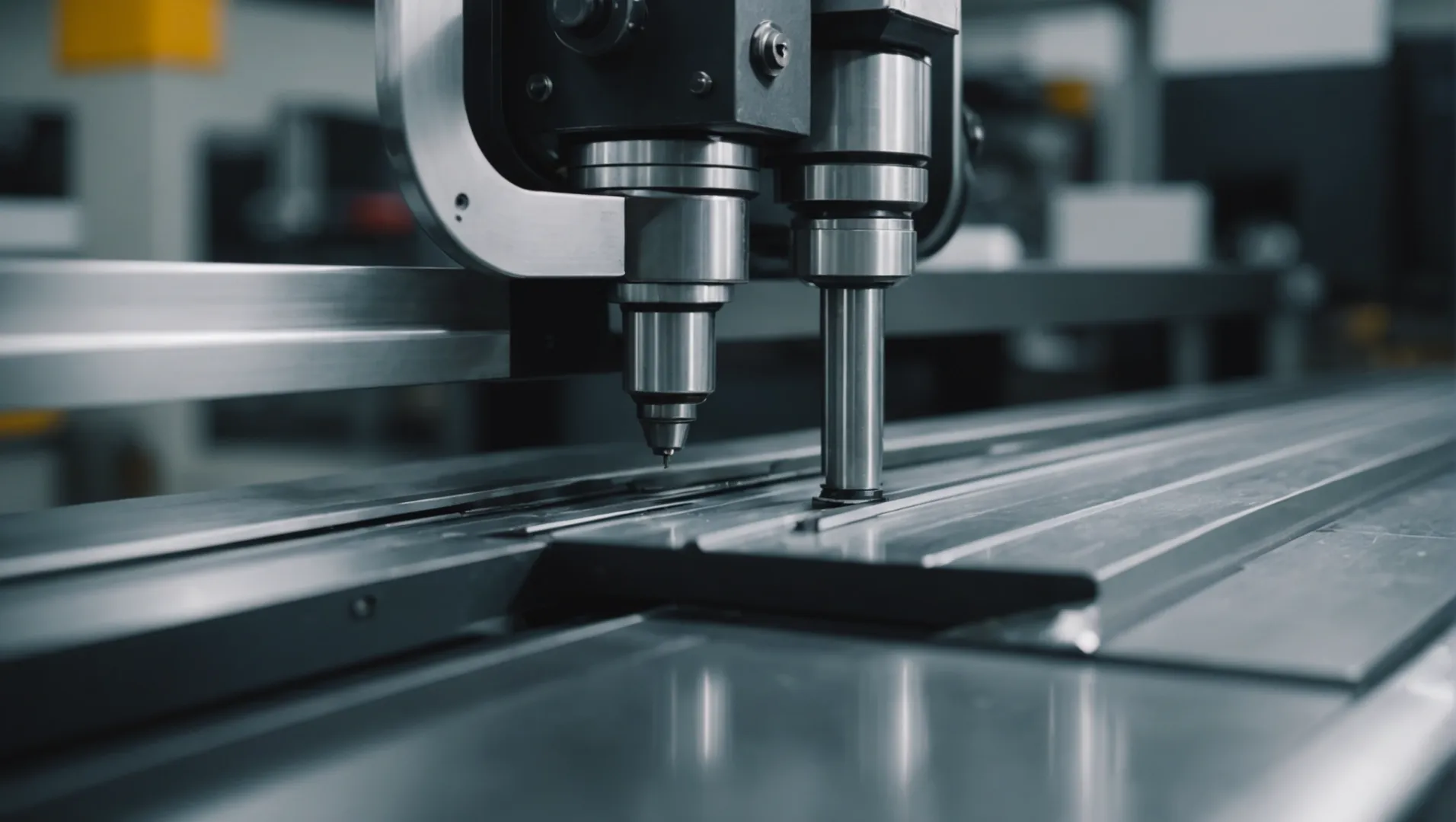What Factors Affect the Bending Capacity of an Aluminum Profile?

Working with aluminum profiles? It’s essential to know what impacts their bending capacity!
The bending capacity of an aluminum profile is influenced by its formability, thickness, bend radius, and elongation percentage. Non-hardened aluminum is preferable for bending due to its elasticity and reduced risk of defects like orange peel.
But there’s more than just these basics! Let’s explore how these factors interact and uncover expert tips for achieving flawless bends.
Non-hardened aluminum is preferred for bending due to elasticity.True
Non-hardened aluminum offers high elasticity, reducing defect risks.
How Does Formability Influence Aluminum Bending?
Understanding aluminum’s formability is crucial for achieving successful bends without defects or failures.
Formability in aluminum directly affects its bending capabilities by dictating how easily it can be shaped without cracking or defecting. Non-hardened aluminum exhibits better formability, allowing for more complex and precise bends due to its inherent elasticity and resistance to defects like orange peel.

The Science of Aluminum Formability
Formability refers to the ability of a material to undergo plastic deformation without being damaged. In aluminum, this characteristic is essential because it determines how easily the metal can be bent into the desired shapes without cracking or developing surface defects. Non-hardened aluminum, which has not undergone work-hardening processes, typically shows superior formability. This quality makes it ideal for applications that require intricate bending, such as creating architectural profiles or automotive components.
Material Composition and Its Impact
The alloy composition of aluminum significantly influences its formability. Alloys with higher levels of magnesium and silicon, such as 6061 and 6063, are often preferred for bending due to their excellent balance between strength and formability. However, other elements like copper can reduce formability by making the aluminum more susceptible to cracking. Understanding the specific alloy composition can guide you in selecting the right material for your bending needs.
Elasticity and Orange Peel Phenomenon
Elasticity is another critical factor in determining formability. Non-hardened aluminum boasts high elasticity, allowing it to return to its original shape after minor deformations, thus preventing permanent defects. One common issue with bending aluminum is the ‘orange peel’ effect, where the surface becomes rough and textured like the skin of an orange. This effect is minimized in non-hardened aluminum, allowing for smoother finishes.
| Property | Non-Hardened Aluminum | Hardened Aluminum |
|---|---|---|
| Elasticity | High | Low |
| Resistance to Cracking | High | Low |
| Surface Finish | Smooth | Prone to Defects |
Industrial Techniques and Quality Control
Advanced bending techniques, such as rotary draw bending or mandrel bending, are employed to enhance the formability of aluminum further. These methods provide precision control over the bend radius and angle, reducing the risk of defects. Quality control measures, such as consistency checks, are crucial in ensuring each bent profile meets exact specifications. Employing skilled professionals and sophisticated machinery is vital to maintain high standards in the final product.
By understanding these aspects of formability, manufacturers can effectively navigate the challenges of bending aluminum profiles, ensuring both functionality and aesthetics are preserved. For more insights into industry practices and recommendations, you might explore specialized techniques1 or expert opinions2.
Non-hardened aluminum is more formable than hardened aluminum.True
Non-hardened aluminum has higher elasticity, reducing defects during bending.
Copper in aluminum alloys enhances their formability for bending.False
Copper reduces formability, increasing susceptibility to cracking.
What Role Does Thickness Play in Bending Capacity?
Thickness is a pivotal factor in determining the bending capacity of aluminum profiles, impacting both flexibility and strength.
The thickness of an aluminum profile significantly affects its bending capacity. Thicker profiles offer greater resistance to deformation and maintain structural integrity under stress, while thinner profiles are easier to bend but risk buckling or warping. Achieving optimal bending involves balancing thickness with other factors like material type and design requirements.

Understanding Thickness in Aluminum Profiles
Thickness refers to the cross-sectional measurement of the aluminum profile. In practical terms, it’s the distance between one side of the profile to the other, measured perpendicular to its surface. This dimension plays a critical role in determining how an aluminum profile behaves when subjected to bending forces.
Why Thickness Matters
-
Structural Integrity:
Thicker aluminum profiles inherently possess greater resistance against external forces, reducing the likelihood of buckling under pressure. This resistance ensures the profile maintains its structural integrity even when subject to significant loads. -
Flexibility:
While thicker profiles provide more support, they are less flexible compared to thinner ones. A thinner profile might be easier to bend, allowing for more intricate shapes, but this comes at the cost of reduced load-bearing capacity. -
Material Efficiency:
Balancing thickness can optimize material use. Using the least amount of material while maintaining structural requirements can lead to cost efficiency and sustainability in production.
Case Studies: Real-world Applications
- Construction Industry: In applications such as curtain wall systems, using a thicker profile ensures that the structure can withstand environmental stressors like wind or seismic activity.
- Automotive Sector: Thinner profiles are often employed in vehicle design where weight reduction is crucial, yet engineers must carefully calculate the optimal thickness to prevent structural failure.
| Parameter | Thicker Profiles | Thinner Profiles |
|---|---|---|
| Flexibility | Less flexible | More flexible |
| Load-bearing capacity | High | Lower |
| Risk of Buckling | Low | High |
| Material Cost | Higher | Lower |
Balancing Act: Finding the Right Thickness
When determining the ideal thickness for a project, engineers must consider other factors like material type3, design requirements, and cost constraints. Achieving the perfect balance is essential for optimizing performance without over-engineering or overspending.
Expert Insights from Sinoextrud
According to Sinoextrud4, non-hardened aluminum profiles with an appropriate thickness are preferred for bending tasks due to their elasticity and reduced defect risk. Their smallest bending radius of 250mm is achieved through careful thickness management, ensuring high-quality results consistently. This expertise highlights how understanding and manipulating thickness is crucial for successful aluminum bending.
Thicker profiles resist deformation better than thinner ones.True
Thicker aluminum profiles maintain structural integrity under stress.
Thinner profiles have a higher load-bearing capacity.False
Thinner profiles are easier to bend but risk buckling under load.
Why Is Bend Radius Critical for Aluminum Profiles?
Understanding the importance of bend radius is crucial when working with aluminum profiles to avoid structural failures.
Bend radius is vital for aluminum profiles as it determines the degree of bend achievable without causing material failure. A smaller bend radius demands higher flexibility, thus non-hardened aluminum is typically preferred for its elasticity, reducing risks of cracking or deformation.

Understanding Bend Radius in Aluminum Bending
The bend radius5 is the minimum radius one can bend an aluminum profile without compromising its integrity. It is a critical specification that engineers must consider during the design phase to ensure the product’s durability and functionality. The bend radius influences how an aluminum profile will perform under stress, impacting its potential applications in industries such as automotive and construction.
Factors Influencing Bend Radius
-
Material Properties: Non-hardened aluminum is preferred for applications requiring a small bend radius due to its inherent elasticity and ability to withstand deformation without cracking.
-
Profile Thickness: Thicker profiles require a larger bend radius because they are less flexible, which increases the risk of developing stress fractures if bent too tightly.
-
Temperature: Warmer temperatures generally improve metal flexibility, allowing for tighter bends. Therefore, temperature control can be a crucial factor in managing bend radius during the bending process.
| Factor | Influence on Bend Radius |
|---|---|
| Material Type | Non-hardened allows tighter bends |
| Profile Thickness | Thicker profiles need larger radii |
| Temperature | Higher temperatures improve flexibility |
Practical Implications in Manufacturing
During manufacturing, selecting the correct bend radius ensures that the aluminum profile maintains its structural integrity and aesthetic appeal. This aspect is particularly important in sectors that demand precision and reliability, such as aerospace and automotive industries. For example, a smaller bend radius can be essential for creating aerodynamic shapes in vehicle components.
Expert Insights: Best Practices
According to experts from Sinoextrud6, adhering to specific bend radii is crucial to prevent defects like orange peel effect and cracking. They emphasize meticulous quality inspections to maintain consistency across batches, which is vital for large-scale production where uniformity is key.
By understanding and applying the correct bend radius, manufacturers can significantly enhance the quality and performance of aluminum profiles, ensuring their products meet industry standards and customer expectations.
Non-hardened aluminum allows tighter bends than hardened.True
Non-hardened aluminum's elasticity reduces cracking risk in tight bends.
Thicker profiles allow for smaller bend radii.False
Thicker profiles are less flexible, requiring larger bend radii.
How Does Elongation Percentage Affect Aluminum Bending?
Explore how elongation percentage impacts the flexibility and resilience of aluminum profiles during bending.
Elongation percentage measures an aluminum profile’s ductility, affecting its ability to bend without fracturing. Higher elongation percentages typically indicate better bending performance, allowing for more complex shapes without failure.

Understanding Elongation Percentage
Elongation percentage is a critical material property that indicates how much an aluminum profile can stretch before breaking. It is expressed as a percentage of the original length, showing the profile’s ductility. High elongation percentages generally mean the material can withstand significant deformation without fracturing, which is crucial in bending applications.
To illustrate, let’s consider two aluminum alloys:
- Alloy A with an elongation percentage of 20%
- Alloy B with an elongation percentage of 5%
In bending operations, Alloy A7 would typically be more suitable due to its higher ductility, allowing for greater bending angles and tighter radii without cracking.
The Role of Ductility in Bending
Ductility, as indicated by elongation percentage, directly impacts how well an aluminum profile can be bent into desired shapes. When you have an aluminum profile with a high elongation percentage, it can be manipulated into more intricate designs without experiencing structural failures like fractures or orange peel.
However, if a profile’s elongation percentage is low, bending can lead to stress concentrations that exceed the material’s capacity to deform elastically. This results in cracks or complete breakage.
Practical Applications and Considerations
When designing aluminum components that require significant bending, engineers should prioritize materials with adequate elongation percentages to ensure structural integrity and aesthetics. For example, in architectural applications8, where visual appeal is paramount, selecting an alloy with a higher elongation percentage reduces the risk of surface defects.
Additionally, it’s essential to consider factors such as thickness and bend radius alongside elongation percentage to fully optimize bending processes. Using comprehensive data sheets for different aluminum alloys helps in selecting the right material for specific bending requirements.
Higher elongation means better aluminum bending.True
Aluminum with higher elongation can bend more without fracturing.
Low elongation aluminum is ideal for intricate designs.False
Low elongation leads to cracking, unsuitable for intricate bends.
Conclusion
Understanding these factors can transform your projects, enhancing both functionality and aesthetics.
-
Discover advanced methods to enhance aluminum bending precision and efficiency.: Methods of aluminum extrusion bending include roller bending, ram bending, rotary draw bending, compression bending, stretch bending, and more. ↩
-
Gain insights from industry leaders about successful aluminum bending strategies.: The best series for forming – and thus for bending – are the alloy series 3xxx, 5xxx and in some cases 6xxx. Aluminium alloy 6063 is a good choice. ↩
-
Explains how different materials influence profile thickness decisions.: Each alloy has a different series of properties, including the way it behaves during extrusion, fabrication and finishing. By adding different … ↩
-
Learn about Sinoextrud’s innovative approach to aluminum profile bending.: Most aluminum extrusion bending involves 6000-series alloys, as these aluminums offer good strength and formability. The ideal temper depends … ↩
-
Discover why maintaining the right bend radius prevents material failure.: Yes, the bend radius matters. If you go past the recommended bend it will weaken the material,, aka weaker part. This will shorten the life of the part. ↩
-
Learn about Sinoextrud’s expertise in achieving precise bends.: Methods of aluminum extrusion bending include roller bending, ram bending, rotary draw bending, compression bending, stretch bending, and more. ↩
-
Explore different aluminum alloys’ ductility for better bending insight.: The mechanical properties of aluminum are lower compared to other materials … Treated alloys usually have an average elongation rate of about 8%. ↩
-
Learn how ductility benefits architectural aluminum designs.: Aluminum, which is one of the most commonly used metals in high-rise structures and skyscrapers, has high ductility. ↩



